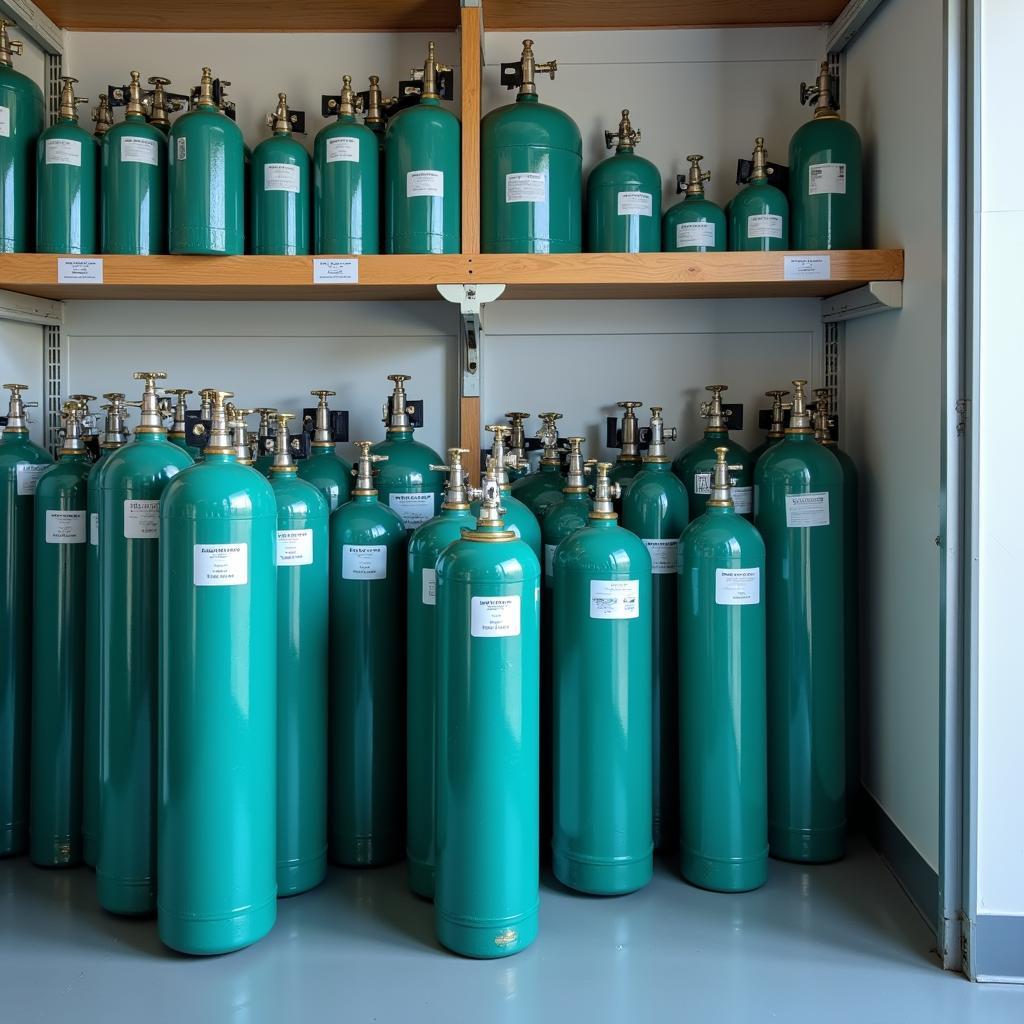Oxygen cylinders for hospital use are a critical component of patient care, playing a vital role in supplying supplemental oxygen to those in need. From emergency situations to long-term respiratory support, understanding the nuances of these life-saving devices is essential for any healthcare facility. This comprehensive guide delves into the intricacies of hospital oxygen cylinders, covering everything from safety protocols to proper handling and maintenance. Learn how to choose the right oxygen cylinder for your hospital and ensure optimal patient care.
 Hospital Oxygen Cylinder Supply in Stock
Hospital Oxygen Cylinder Supply in Stock
What makes selecting the right oxygen cylinder so crucial? It’s about more than just having oxygen on hand; it’s about ensuring patient safety and providing effective respiratory support. Factors like cylinder size, material, and regulatory compliance all play a significant role in optimizing patient care. Investing in high-quality hospital oxygen cylinder systems ensures a reliable and safe oxygen supply for your facility.
Understanding Oxygen Cylinder Types for Hospitals
Different medical scenarios require varying oxygen delivery methods. Therefore, hospitals utilize a range of oxygen cylinders designed for specific purposes. Understanding these distinctions is crucial for effective patient care.
Common Types of Oxygen Cylinders in Hospitals
- High-Pressure Cylinders: These cylinders are designed for transporting and storing large volumes of oxygen under high pressure. They are frequently used for emergency situations and as a backup supply.
- Low-Pressure Cylinders: Primarily utilized for patient transport and ambulatory oxygen therapy, these cylinders offer portability and ease of use.
- Liquid Oxygen Cylinders: These specialized cylinders contain liquid oxygen, offering a higher volume of oxygen in a smaller and lighter package. They are ideal for long-term oxygen therapy and home healthcare settings.
Safety Protocols for Handling Oxygen Cylinders
Oxygen, while life-sustaining, can also pose safety hazards if not handled correctly. Strict adherence to safety protocols is paramount to prevent accidents and ensure the well-being of both patients and staff.
Essential Safety Measures
- Storage: Store oxygen cylinders in a designated, well-ventilated area away from flammable materials and heat sources.
- Handling: Always handle oxygen cylinders with care, avoiding dropping or impacting them. Use appropriate carts and secure them during transportation.
- Valve Operation: Open and close valves slowly to prevent rapid pressure changes.
- Regular Inspection: Inspect cylinders for any signs of damage, leaks, or corrosion.
What are the potential consequences of improper oxygen cylinder handling? Mishandling can lead to leaks, explosions, or fires, endangering lives and property. Following established protocols is non-negotiable for maintaining a safe hospital environment. For a reliable and secure oxygen supply system, consider investing in a comprehensive medical gas pipeline system in hospitals.
Maintaining Oxygen Cylinders for Optimal Performance
Regular maintenance is crucial for ensuring the longevity and reliability of your hospital’s oxygen cylinders. Proper maintenance also minimizes the risk of malfunctions and ensures accurate oxygen delivery.
Key Maintenance Practices
- Regular Cleaning: Clean cylinders with a damp cloth and mild detergent to remove dust and debris.
- Valve Inspection: Inspect valves for leaks and ensure they are functioning correctly.
- Hydrostatic Testing: Periodically test cylinders for structural integrity and pressure resistance.
Conclusion
Oxygen cylinders for hospital use are indispensable tools in providing life-saving respiratory support. By understanding the various types, adhering to strict safety protocols, and implementing a robust maintenance schedule, hospitals can ensure the optimal performance of these critical devices and, ultimately, enhance patient safety. Investing in quality oxygen cylinder systems is an investment in the well-being of your patients and the overall efficiency of your hospital business.
FAQ
- What is the lifespan of a hospital oxygen cylinder?
- How often should oxygen cylinders be inspected?
- What are the signs of a leaking oxygen cylinder?
- Where should oxygen cylinders be stored in a hospital?
- What type of training is required for handling oxygen cylinders?
- How do you choose the right size oxygen cylinder for a patient?
- What is the difference between medical grade and industrial grade oxygen?
If you need further assistance, please contact us at Phone Number: 02437655121, Email: [email protected] or visit us at 298 Cau Dien Street, Minh Khai Ward, Bac Tu Liem District, Hanoi, Vietnam. We have a 24/7 customer service team.